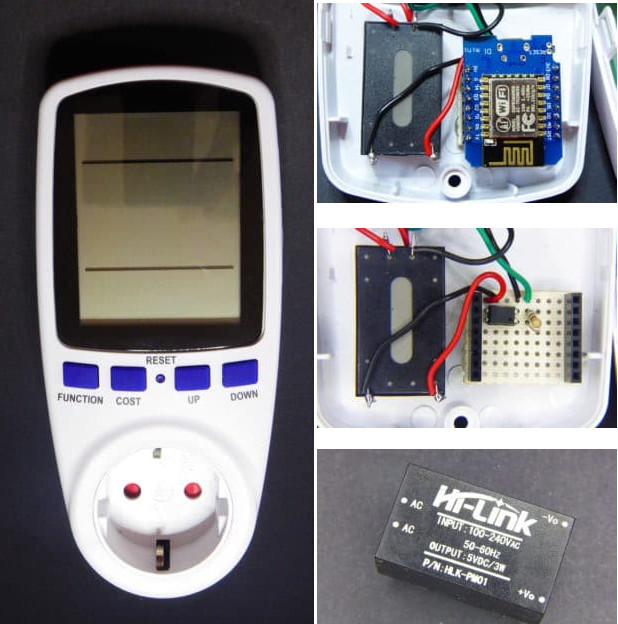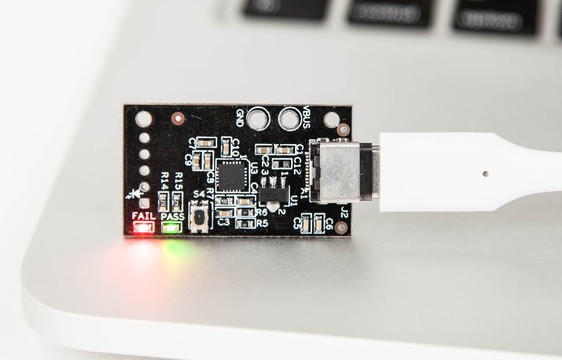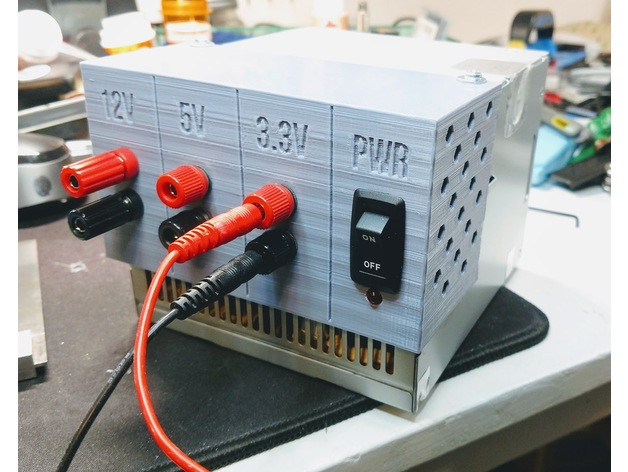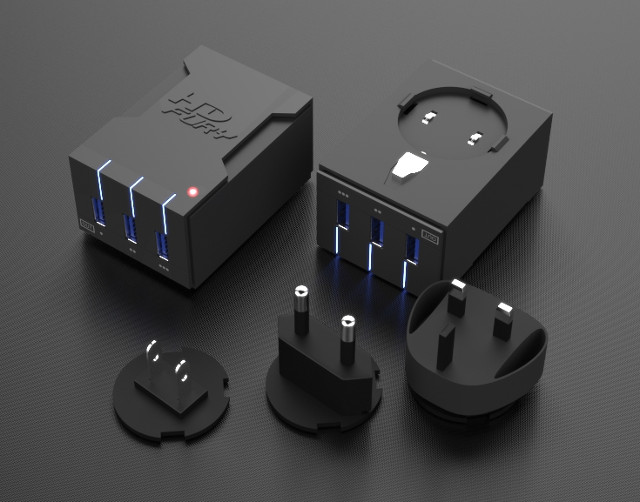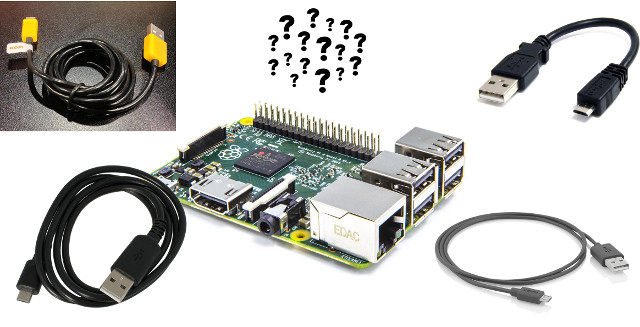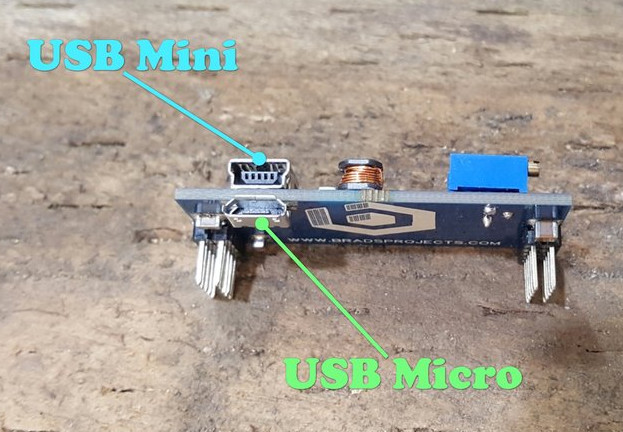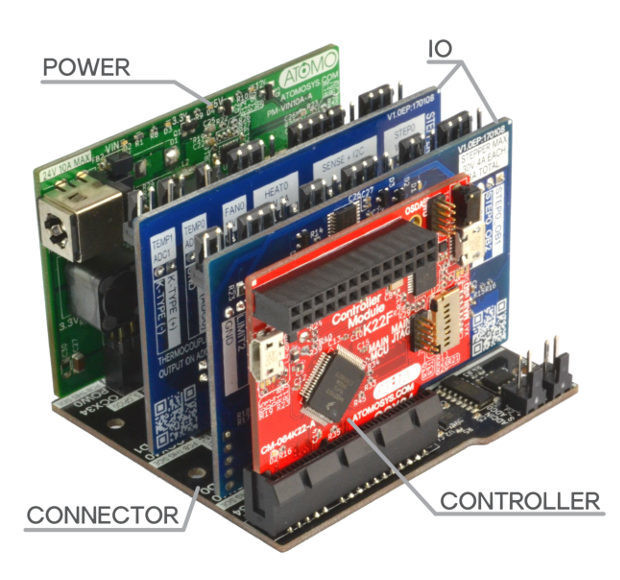Sonoff-Tasmota and ESPurna are the two main open source firmware used in home automation devices, such as Sonoff wireless switches, based on Espressif ESP8266 WiSoC. Xose Pérez – aka Tinkerman – has recently purchased “dumb” power meters / kill-a-watt meters, added WiFi to them with ESP-01 module and Wemos D1 mini board, and implemented support in ESPurna firmware leveraging earlier reverse-engineering work by Karl Hagström. The power meter above looks exactly like the one I’ve been using for review for over two years, and has been more more reliable than other models, such as Broadlink SP2 (with built-in WiFi) that gave up on me after a few months. Xose actually noticed that old and newer models of the power meters were based on different solutions. Karl’s meter relied on ECH1560, while Xose’s new meter was instead based on Vango V9261F, which has a public datasheet, and was already being worked on by […]
USBCEE Tiny-PAT Board Helps Testing USB-C Power Adapters (Crowdfunding)
USB power delivery allows for up to 100W charging using 20V @ 5A through a USB type C port, and the specifications also mandate supports for various voltages between 5V and 20V. However, some USB-C power adapter that not be fully compliant with the specifications, potentially risking to damage your device. USBCEE Tiny-PAT board has been created in order to test such power adapters to make sure they are compliant with USB PD 2.0/3.0 specifications. Tiny-PAT board features and specifications: Supported USB Spec Version – PD 2.0 / PD 3.0 Max Voltage: 24 V Max Current: 5 A Max Power: 100 W USB type C receptacle Misc – Fail and Pass LEDS, S4 mode button, through holes for VBUS & GND Power Consumption: ~10 mA (may vary based on voltage) Dimensions – 35 x 20 mm By default, the board will test all power rules advertised by the power adapter, […]
Convert an old ATX Power Supply into a Bench Power Supply with (or without) 3D Printed Parts
You may own one or more old computer towers with an ATX power supply that just gather dust, but since the ATX connector provides +12V, -12V, 5V, 3.3V and GND signal it could be converted into an bench power supply. People have been doing this for a while, but elliotboney’s solution looks neater than most with a 3D printed part that’s attached on top of the power supply. Once you have printed the part, which may need to be adapted to to your power supply, you just need a few banana jacks, and a power switch before connecting with the cables: I basically kept 3 wires of each voltage, a 3 black wires for each ground. So 3 yellow for 12V, 3 Red for 5V and 3 Orange for 3V. Any extra wires I cut as close to the board as possible and put a little piece of heat shrink […]
ARM Chromebooks Run Android Apps Better, Exhibit Longer Battery Life than Intel Chromebooks (Study)
Google has been working on supporting Android apps and the Play Store on Chromebooks, which are normally sold with either ARM or Intel processors. So the ability to run Android apps well is one of the things to consider before purchasing a Chromebook. Shrout Research has published a paper entitled “Chromebook Platform Choice Important for Android App Performance” comparing an Acer Chromebook R13 with a Mediatek MT8173C ARM Cortex A72/A53 processor to Acer Chromebook R11 with an Intel Celeron N3060. The Intel Chromebook has a smaller resolution so this could be an advantage, so less resources are needed to update the display. However, the ARM processor is significantly more powerful than the Intel one according to GeekBench results, and Chromebook R13 is sold for $399 on Amazon US, while Chromebook R11 goes for $299 (and lower during promotions). So it’s not a perfect comparison, but it should give an idea […]
$59 HDFury Universal PSU Doctor Supports Power Monitoring via iOS or Android
We’ve recently covered Cambrionix PowerPad 15S, a high-end 16-port USB hub that can deliver 5V/2.1A on each port, integrates power monitoring function, and an API to control and monitor each port individually. That’s a very cool device, but it’s also expensive at around $600, and even the cheaper PowerPad 15C without data pins, come at $200. If you don’t need the complete set of features offered by Cambrionix devices, but you’ll like to get a reliable multi-port USB charger with power monitoring function, HDFury Universal PSU Doctor could be an interesting option. HDFury Universal PSU Doctor specifications: MCU – Renesas RL78 16-bit MCU USB – 3x USB ports with 2x 5V ports up to 5V/2.14A, 1x USB QC 2.0 port supporting 5V/2.14A, 9V/1.6A or 12V/1.2A output ADC – Up to 11 channels, 10-bit resolution for power monitoring Sensor – n-chip temperature sensor Power Supply Built-in 100 ~ 240V AC with […]
Selecting a Micro USB Cable to Power Development Boards or Charge Phones
Yesterday one person contacted me on Facebook asking me whether there was any chance of me doing a “which usd-micro usb cable is best”, as there’s not much clear information on the Internet. His purpose was to charge his phone, but many development boards come with a micro USB port, and I’ve read many comments about powering the board. It also happened to me, and the main cause can either be the power supply which does not work as rated (usually 5V/2A), or the micro USB cable which may have a resistance a little to high leading to voltage drops. You’ll know you may have a power problem when the board refuses to boot, and usually boot loop, or randomly reboots especially under high load. The first solution is to get a power supply that provide the right voltage and amperage, and you can test that with USB Charger doctor […]
Toaster Breadboard Power Supply Supports 3.3V, 5V, and Variable 5V to 16 V Outputs
YwRobot MB102 is a popular power supply for breadboards delivering 5V or 3.3V to both power rails. Bradsprojects’ Toaster power supply offers similar functionalities but beside outputting just 5V or 3.3V, it also adds a 5V to 16V variable output, and takes 5V from its micro or mini USB port.Toaster board specifications: Input Voltage – 5V via USB Mini and USB Micro port Input Current (max) – 1Amp Output Voltage 1 – 3.3 Volts Output Voltage 2 – 5 Volts Output Voltage 3 – Variable 5 Volts to 16 Volts with potentiometer Protection – 1.1Amp Resettable Fuse Output Connection – Standard Dual Rail Breadboard 2.54mm spacing. Dimensions – 50mm x 25mm You just need a screwdriver and a multimeter to adjust the variable output to your requirement.The Toaster board can be purchased on Tindie for $10 + shipping. Jean-Luc Aufranc (CNXSoft)Jean-Luc started CNX Software in 2010 as a part-time endeavor, […]
Atomo is a Raspberry Pi Compatible Modular Electronics Prototyping System (Crowdfunding)
Atomo is a modular electronics protyping system comprised of four elements: Control, I/O, Power, and Connector, with the PCBs for each category color-coded with respectively red, blue, green, and black. The connector board connects power, I/O and control(ler) boards together in a way that’s supposed to be neater than most hand made prototypes. The whole ecosystem includes 15 different boards: Controllers with 26-pin Raspberry Pi compatible header 2 IO Module Controller (CM-M2K22-A) based on NXP Kinetis K22F MCU 4 IO Module Controller (CM-M4K64-A) based on NXP Kinetis K64F MCU 8 IO Module Controller (CM-M8K64-A) based on NXP Kinetis K64F MCU Connectors 8 IO Module Connector (GM_M8P2_A) – Dim: 145mm x 100mm; power up to 40V @ 64A 4 IO Module Connector (GM_M4P1_A) – Dim: 71mm x 100mm; power up to 40V @ 32A 2 IO Module Connector (GM_M2P1_A) – Dim: 71mm x 65mm; power up to 40V @ 16A 2 IO Module Low-Power Connector […]


